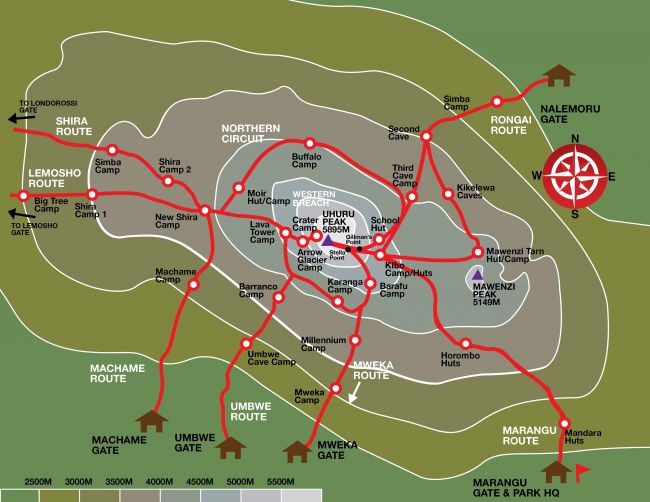

Mount Kilimanjaro is the tallest mountain in Africa, standing at 5895 meters (19,341 feet) above sea level. It’s also the tallest free-standing mountain in the world. The mountain offers a once-in-a-lifetime experience to climbers, and its accessibility allows even non-technical hikers to reach its summit. Whether you're an experienced mountaineer or a first-time adventurer, Kilimanjaro is an extraordinary challenge.


The beauty of Kilimanjaro lies not only in its immense height but also in the diversity of the ecological zones you pass through on your way to the summit. Starting from tropical rainforests at the base, you ascend through alpine deserts and finally to the snow-capped Arctic summit of Uhuru Peak. Despite its challenging nature, Kilimanjaro remains accessible to a wide range of climbers, making it one of the world’s most popular trekking destinations.
There are several routes available for those looking to summit the mountain, each offering a unique experience:
The Marangu Route is one of the most popular and easier routes to Kilimanjaro’s summit. It offers hut accommodation and is perfect for those looking for a less strenuous climb. It typically takes 5 to 6 days to complete.
Known for its breathtaking views, the Machame Route is more physically demanding but incredibly rewarding. It is strictly a camping route, and the journey typically takes 6 to 7 days.
The Rongai Route approaches Kilimanjaro from the north and offers a more tranquil experience with fewer climbers. It’s considered one of the easier routes and takes about 6 days to complete.
The Umbwe Route is known for being the most difficult and demanding route. It is recommended for more experienced climbers looking for a challenge. This route takes about 6 days to complete.
The Lemosho Route is one of the most scenic but lesser-used routes. Starting from the west, it offers a long trek that spans about 7 to 8 days, allowing for great acclimatization.